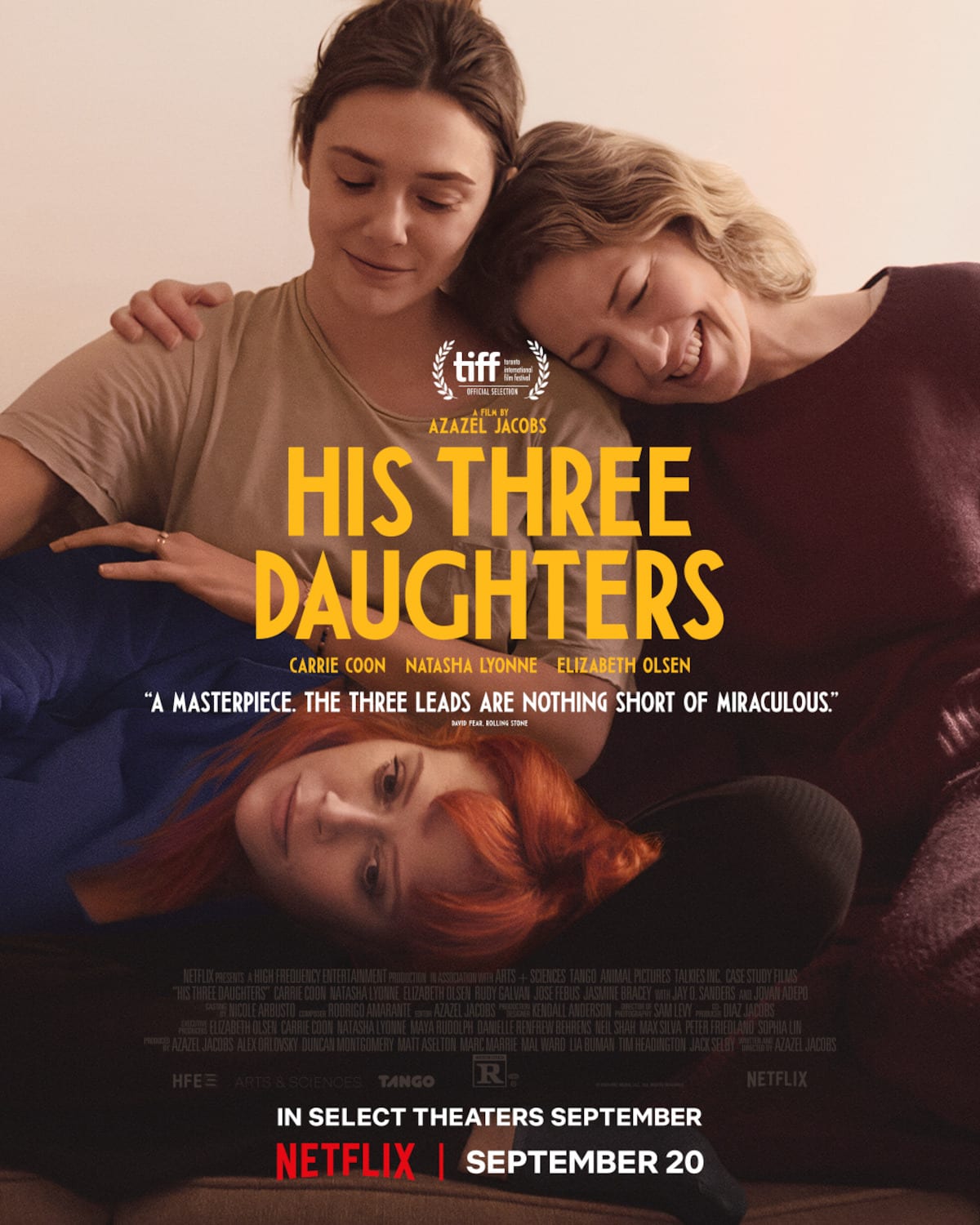
- Starring
- Carrie Coon, Natasha Lyonne, Elizabeth Olsen
- Writer
- Azazel Jacobs
- Director
- Azazel Jacobs
- Rating
- R (United States)
- Running TIme
- 101 minutes
- Release Date
- September 6th, 2024 (limited)
- Release Date
- September 20th, 2024 (Netflix)
Overall Score
Rating Summary
Coming to terms with the loss of a loved one can be traumatic enough in itself; coming to terms with the loss of a loved one while they’re still around is another matter entirely. This isn’t to say, even remotely, that dealing with a sudden death is somehow worthy of less sympathy than those forced to view a family member in gradual decline, but the processes of dealing with these situations are undeniably distinct from one another, the latter bringing out its own set of complex questions. When you know someone is at the end, do you pray for recovery, or for a quick, painless departure? Do you spend every moment they have left by their side, or do you distance yourself in preparation for the permanent separation just around the corner? There’s no one correct way to grieve, and His Three Daughters provides yet another case study for when these differing processes find themselves under one roof.
For Katie (Coon), preparation for the end means getting her father’s affairs in order, enforcing a rigid schedule and taking the reins of the family to make up for where she feels others are lacking. For younger sister Christina (Olsen), this is a time to bring everyone together in harmony—organic or otherwise—putting on whatever niceties are required to handle the impending troubles as a family. For eldest step-sister Rachel (Lyonne), the incoming loss means keeping to herself, out of everyone’s way while she smokes a few blunts and begins to make peace with the void in her life that will soon open itself up. And so, Azazel Jacobs paints a portrait of these clashing sisters as their methods of grieving get in each other’s ways, forcing an eventual reckoning with the reality of their collective relationships.
Based on the premise of the film, alongside the staginess of its confined presentation, audiences may be surprised to learn that His Three Daughters is, in fact, not based on a stage play. Almost entirely relegated to the thin-walled apartment these women have inhabited as they see their father to his hospice-aided end, Jacobs does his best to keep the film’s visuals alive with distinct lighting choices—everything, from the sterile brown lighting of the living room, to the blue glow of Rachel’s TV, to the sceptic green of the street lamps that paint her face at night, is a source of compelling colouration on the screen. Even daytime lighting in the few outdoor scenes on a park bench are given that inconsistent brightness that comes with passing clouds on a sunny day; a particular monologue from Olsen is nicely complemented by this choice, with an appreciated subtlety rather than an overbearing self-satisfaction.
In spite of these efforts to colour the film beyond its stage-play disposition, His Three Daughters unfortunately does fall victim to the constant sense of watching a performance onstage, particularly due to the calculated nature of the film’s dialogue and, at times, its performances. Lyonne, Coon and Olsen are all operating at entirely different registers—again, lending validity to the notion that their grieving processes are all distinct and, subsequently, disharmonious—but at a certain point, the endless barrage of rapid-fire, Aaron Sorkin-like monologues become exhausting and repetitive, as if Jacobs has difficulty expressing this friction outside multi-minute diatribes from each of his cast members. At the very least, the monologues in question aren’t thoughtless in disguising the emotional states they’re supposed to represent—before outright complaining that Rachel isn’t doing enough to be there, Katie rambles on about her sneaking pot sessions in the shared bathroom—but this form of expression, after a while, begins to feel like it’s trying to tell us more than we can simply glean from Lyonne’s half-distant, half-repressed glare.
This obstacle becomes particularly clear in the final act, as a moment of subverting reality just leads to yet another monologue—one you may entirely forget before it’s even finished—but His Three Daughters never wavers in its respect for those characters giving these seemingly endless lectures. Where Jacobs struggles is in his confidence in how to define them beyond the scope of their interpersonal conflicts, but even when the film comes across as too measured for its own good, that trio of acting pillars remains steady, carrying the film with just as much flawed dignity as the sisters try to carry each other.
still courtesy of Netflix
If you liked this, please read our other reviews here and don’t forget to follow us on Twitter or Instagram or like us on Facebook.
Discover more from
Subscribe to get the latest posts sent to your email.
